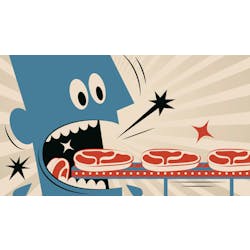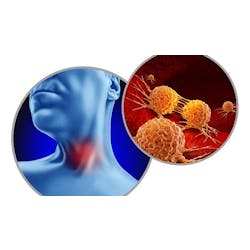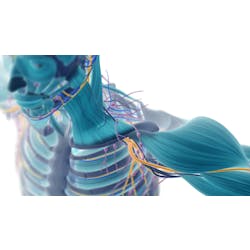Assessing the readability of patient education materials, and choosing the best messages for your patients
BY Toni S. Adams, RDH, MA
Approximately half of U.S. residents attempt to function with limited literacy. They read and write poorly and slowly, have trouble understanding and using math, and find it difficult to follow and remember oral communication, though they can be highly articulate when speaking. One in five is "functionally illiterate," meaning that they are limited in their ability to participate in a society where literate abilities are assumed. Scholars have concluded that literacy impacts health more than age, income, education, occupation, race, or ethnicity.
A person's literate skill generally correlates with his level of health literacy or his ability to find, understand, evaluate, and use health information. According to a report from the United States Department of Education, only about 12% of English-speaking adults in the country understand health. Health literacy has been called "the newest vital sign"1 and a necessary "currency"2 for negotiating the technical language and complex systems of modern health care.
Oral health literacy applies the concept to the oral environment and is the topic of an increasing number of published, peer-reviewed research articles. Though the exact relationship between oral health literacy and oral health is still not known, it seems logical to conclude that they correlate just as health literacy relates to general health.
Our job is to help patients achieve optimum oral health. We attempt to educate them on a variety of topics, which is a continual challenge as health and oral health grow more complex and as our time with people shrinks. So we supplement our chairside education with printed materials that people can take home. Unfortunately, due to deficits in literacy and health literacy, about half of the people who sit in our chairs cannot read a lot of the literature that we give them.
---------------------------------------------------
Additional reading
- The dental professional's role in HIV education: It's an ethical responsibility
- Communication as a part of the healing process
- Educate your patients before their children’s first dental visit
---------------------------------------------------
Rudd and colleagues surveyed the peer-reviewed health literacy research from a 25-year period. More than 800 studies in public health, medicine, and oral health concluded that most health education literature is unreadable for the average high school graduate. To complicate the problem, low-literate people tend to be less assertive in letting us know that they don't understand or in asking questions. Most are embarrassed by their low literacy and do not reveal their limitations, so it is difficult to identify and help them. One way is to assure that patient education handouts are readable for people in the lower reading levels.
This article is an overview of readability, or the extent to which a document is understandable to a given person. Readability is an issue with all of the reading that we ask people to do, including histories and other forms, practice websites, online resources, and patient education literature. This article can be applied to all of these, but will focus on the last. Do not randomly select literature because it is free or easily available. It is pointless to dispense materials that are not helpful. Use these guidelines to evaluate the handouts that you have on hand and those that you consider acquiring.
As you evaluate or search, keep your goals and your audience in mind. Think about what you want a brochure to do and who will use it. People of all reading levels appreciate writing that is brief, simple, and clear, so know that easy-to-read materials are suitable for everyone, including advanced readers. Assess three main features of a document: the content, the writing style, and the layout.
Content: What is the message?
What ideas are addressed? A handout should cover only a few main points and omit nice-to-know but unneeded technical background information, which makes the reading more difficult and adds length. A document that is too complex can daunt any reader, but is especially intimidating to low-literate people.
The content should be clear, direct, simple, and relevant to your intended readers. Information is easier to understand and recall when it is presented in a logical sequence such as question-answer, problem-solution, known to unknown, or chronological progression of events or facts.
The text should focus on the new information or skill that you want the person to acquire, and emphasize why it is important. People always want to know, "What's in it for me?" Information about how to develop new skills can be easier to follow when presented as steps. Also, look for literature that includes a publication date and at least a few reliable references so that you know it is accurate and current.
Writing: How is the message communicated?
The writing style makes the content easy to understand. Sentences and paragraphs should generally be short, simple, and direct. Look for literature that is written in a conversational style and that uses an active voice and common words rather than a lot of technical jargon. For instance, look for "gum disease" instead of "periodontal disease," "high blood pressure" instead of "hypertension," and "X-ray" instead of "radiograph." When unusual technical terms must be used, they are clearly defined. Some technical terms, such as cholesterol or nutrition, are well known so may not need defining.
Select documents that are written at a fifth- to sixth-grade level. Consult the seven formulas at readabilityformulas.com. Most formulas on this free site determine reading level by calculating the proportion of words with three or more syllables. However, they will not rate the content, sentence structure, or layout, so use them in conjunction with the rest of your evaluation (see sidebar).
Layout: What does the document look like?
A well-laid-out document is more inviting and easier to read. An ideal layout is created by strategic use and placement of the elements such as text, fonts, paragraphs, columns, graphics, tables, and colors.
The easiest-to-read documents leave about one-third of the paper empty. White space highlights and defines the elements and should appear around the outer borders, between columns and paragraphs, and around pictures and tables.
The text should have some breathing room. Look for 12- to 14-point serif fonts. Larger or smaller fonts can make the text more difficult to read. Serifs are the little extra flourishes such as on Times New Roman and Cambria fonts. Simpler sans-serif fonts, such as Calibri and Arial work better as headings. Documents should use no more than two or three different fonts and avoid all capital letters. All-caps are more difficult to read because the eye depends on the variations in lower-case letters to follow the text.
Online evaluation resource The Suitability of Assessment Materials (SAM) can guide the evaluation of a document. It will ask about content, literacy demand, graphics, layout, learning motivation, and cultural appropriateness. You could apply the SAM questions yourself, ask five to 10 patients of various literacy levels to apply it to a given document and average the answers, or both. Pritchett & Hull, a patient education materials company, offers a general explanation with links to helpful free SAM information, including complete criteria and a simplified scoring sheet at http://www.p-h.com/pages.php?pageid=8. |
Sentences and paragraphs should be brief and direct. Paragraphs should be justified to the left margin, not centered or right justified. Text on wider pages should be divided into columns.
Simple but descriptive headings and subheadings can help the reader navigate the document and stand out when they are in bold and larger than the majority of the text. Lists are read more easily when they are presented as bullet points rather than in a paragraph style, should be no more than about five items long, and should flow from one point to the next in a logical sequence.
Graphics and pictures can add appeal but must be meaningful, clearly and simply labeled, and placed near the text that they illustrate. Color can make a document more attractive, but only if there are not too many colors. Backgrounds should be white or a light color, and colored text should contrast enough to make reading easy.
Et cetera: What else should you know?
Few documents meet all of these guidelines, so look for those that come the closest.
Spoken and written information should complement each other, so always add an oral explanation and perhaps some personalizing notes on a handout. Follow up at the next appointment by asking people about the clarity and helpfulness of the materials.
Maintain an assortment of materials that are brief but comprehensive, cover a variety of topics, and are appropriate for different audiences. These can be hard copies or easily printed electronic versions. Then, dispense only a few handouts at once. Too much literature can be just as overwhelming as poorly written literature.
Designate one person in the office to evaluate and select patient education materials. That person can complete the free plain language training offered by the National Institutes of Health at nih.gov/clearcommunication/plainlanguage/gettingstarted/index.htm. This training is about how to write materials, but can also be used to evaluate existing materials. The appointed person might also consult some patients to get their impressions. Ask, "Can you help me?" give several options to compare, and perhaps ask them to apply the SAM (see "Online evaluation resource").
Health professionals should regularly review the readability of their patient education materials. Documents should be current, clear, simple, brief, and relevant. Reread the materials occasionally. Are they up-to-date? Do they still meet your goals? Patients still may not read every word of every document that you give them, but you will have done your best to assure the quality and readability of each.
Toni Adams, RDH, MA, is the 2009 Philips Sonicare/RDH Mentor of the Year. She is a speaker, writer, editor, publisher, and a specialist in communication issues in health care. She can be contacted at [email protected].
Footnotes
1. Weiss BD, Mays MZ, Martz W, Castro KM, DeWalt DA, Pignone MP, et al. Quick assessment of literacy in primary care: The newest vital sign. Annals of Family Medicine, 2005;3:514-522.
2. Parker R. Health literacy: A challenge for American patients and their health care
providers. Health Promotion International, 2000;15(4):277-283.
References
• 9 fact sheets about health literacy (2013). Center for Health Care Strategies, Inc. Retrieved
January 2, 2014 from http://www.chcs.org/media/CHCS_Health_Literacy_Fact_Sheets_2013.pdf
• DeWalt DA, Callahan LF, Hawk VH, Broucksou KA, Hink A, Rudd R, Brach C. (2010). Health literacy universal precautions toolkit. North Carolina Network Consortium, The Cecil G. Sheps Center for Health Services Research, The University of North Carolina at Chapel Hill, AHRQ Publication No. 10-0046-EF. Retrieved Aug. 2, 2014 from http://www.nchealthliteracy.org/toolkit/Toolkit_w_%20appendix.pdf
• Griffin J, McKenna K, Tooth L. Written health education materials: Making them more effective. Australian Occupational Therapy Journal, 2003;50:170-177.
• Harvey HD, Fleming P. The readability and audience acceptance of printed
health promotion materials used by environmental health departments. Journal of Environmental Health, 2003;65(6):22-28.
• Horner SD, Surratt D, Juliusson S. Improving readability of patient education materials. Journal of Community Health Nursing, 2000;17:15-23.
• IOM (Institute of Medicine, 2013). Oral health literacy: Workshop summary. Washington,
DC: The National Academies Press.
• Ivnik M, Jett MY. Creating written patient education materials. Chest, 2008;133: 1038-1040.
• Kirsch IS, Jungeblut A, Jenkins L, Kolstad A. (2002). Adult literacy in America: A first
look at the findings of the National Adult Literacy Survey (3rd ed.). National Center for Education Statistics, U.S. Department of Education, Office of Educational Research and Improvement. Washington, DC: U.S. Government Printing Office. Retrieved Aug. 12, 2008, from http://nces.ed.gov/Pubsearch/pubsinfo.asp?pubid=93275
• Kutner M, Greenberg E, Jin Y, Paulsen C. (2006). The health literacy of America's adults: Results from the 2003 National Assessment of Adult Literacy. U.S. Department of Education, Institute of Education Sciences, National Center for Education Statistics. Washington, DC: U.S. Government Printing Office. Retrieved July 26, 2008, from http://nces.ed.gov/pubs2006/2006483.pdf
• Nielsen-Bohlman L, Panzer AM, Kindig DA. (Eds.). (2004). Health literacy: A prescription to end confusion. Institute of Medicine of the National Academies. Washington, D.C.: The National Academies Press. Retrieved July 16, 2008, from http://www.iom.edu/?id=19750
• Parikh NS, Parker RM, Nurss JR, Baker DW, Williams MV. Shame and health literacy: The unspoken connection. Patient Education and Counseling, 1996;27:33-39.
• Parker R. Health literacy: A challenge for American patients and their health care providers. Health Promotion International, 2000;15(4), 277-283.
• Rootman I, Ronson B. Literacy and health research in Canada: Where have we been and where should we go? Canadian Journal of Public Health, 2005;96(Suppl. 2), 562-577.
• Rudd RE. Health literacy skills of U.S. adults. American Journal of Health Behavior, 2007;31(Suppl. 1):S8-S18.
• Seubert D. (2009). Improving readability by design. Marshfield Clinic and Family Health
Center of Marshfield; Wisconsin Literacy 2009 Health Literacy Summit. Retrieved August 2, 2014 from http://www.wisconsinliteracy.org/documents/ImprovingReadabilitybyDesign.pdf
• Weiss BD. (2009). Health literacy and patient safety: Help patients understand: Manual
for clinicians (2nd ed.). Chicago, IL: The American Medical Association Foundation.
• Weiss BD, Mays MZ, Martz W, Castro KM, DeWalt DA, Pignone MP, et al. (2005). Quick assessment of literacy in primary care: The newest vital sign. Annals of Family Medicine, 3, 514-522.





